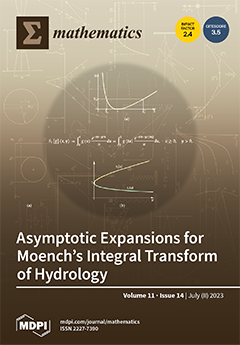Given several nonnegative matrices with a single pattern of allocation among their zero/nonzero elements, the average matrix should have the same pattern, too. This is the first tenet of the pattern-multiplicative average (PMA) concept, while the second one suggests the
multiplicative (or
geometric
[...] Read more.
Given several nonnegative matrices with a single pattern of allocation among their zero/nonzero elements, the average matrix should have the same pattern, too. This is the first tenet of the pattern-multiplicative average (PMA) concept, while the second one suggests the
multiplicative (or
geometric) nature of averaging. The original concept of PMA was motivated by the practice of matrix population models as a tool to assess the population viability from long-term monitoring data. The task has reduced to searching for an approximate solution to an overdetermined system of polynomial equations for unknown elements of the average matrix (
G), and hence to a nonlinear constrained minimization problem for the matrix norm. Former practical solutions faced certain technical problems, which required sophisticated algorithms but returned acceptable estimates. Now, we formulate (for the first time in ecological modeling and nonnegative matrix theory) the PMA problem as an eigenvalue approximation one and reduce it to a standard problem of linear programing (LP). The basic equation of averaging also determines the exact value of
λ1(
G), the dominant eigenvalue of matrix
G, and the corresponding eigenvector. These are bound by the well-known linear equations, which enable an LP formulation of the former nonlinear problem. The LP approach is realized for 13 fixed-pattern matrices gained in a case study of
Androsace albana, an alpine short-lived perennial, monitored on permanent plots over 14 years. A standard software routine reveals the unique exact solution, rather than an approximate one, to the PMA problem, which turns the LP approach into ‘’the best of versatile optimization tools”. The exact solution turns out to be peculiar in reaching zero bounds for certain nonnegative entries of
G, which deserves modified problem formulation separating the lower bounds from zero.
Full article





